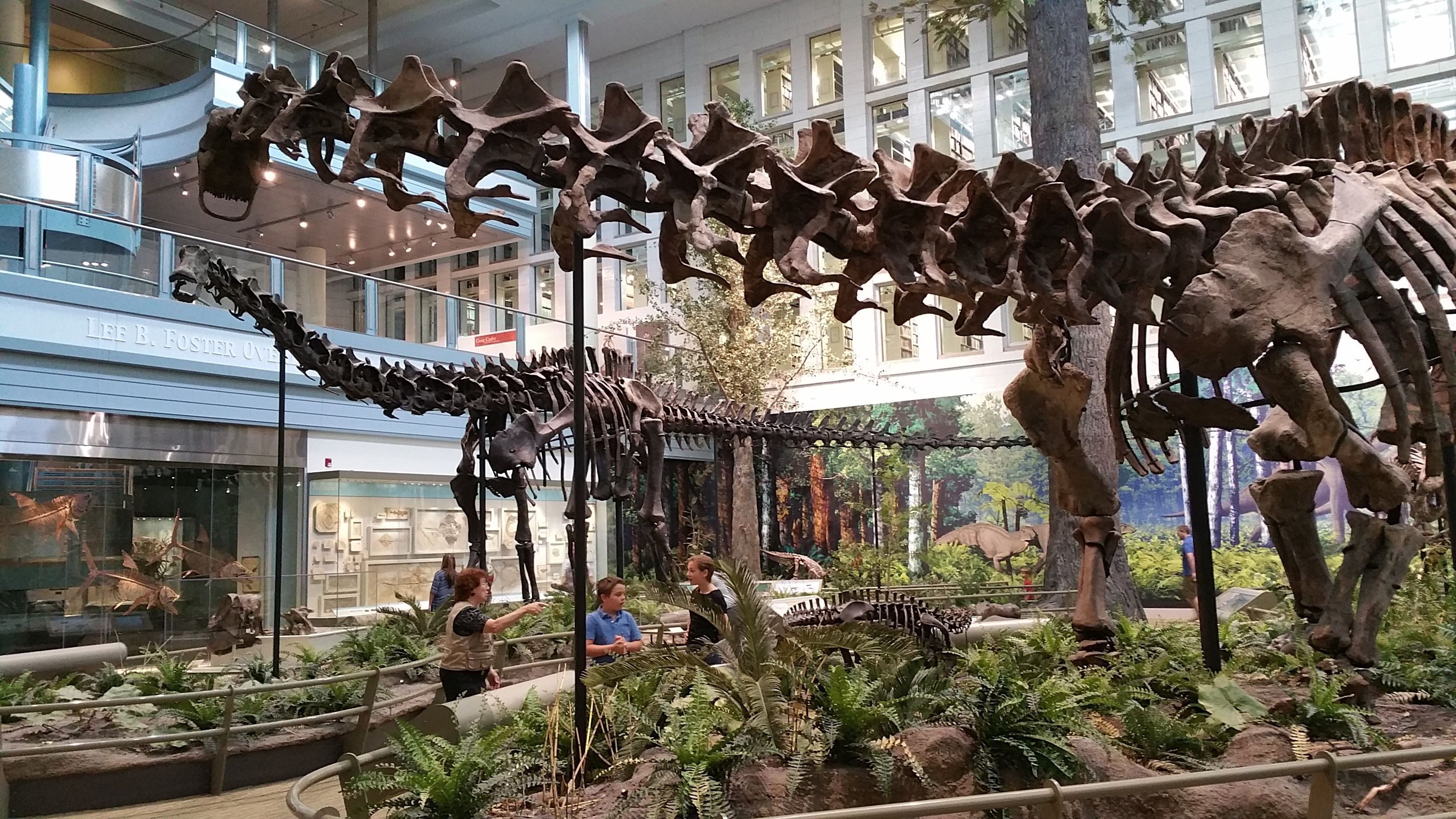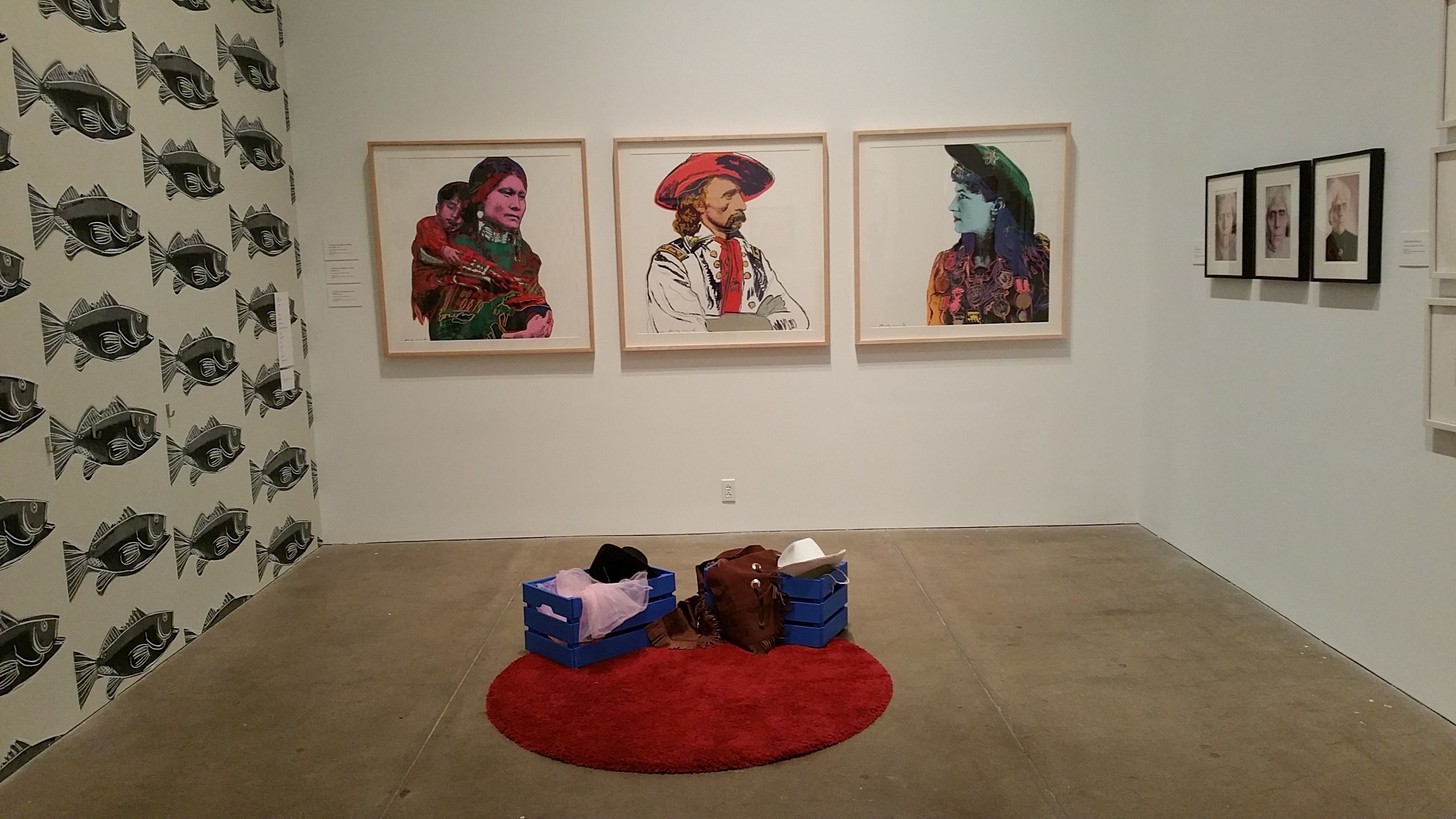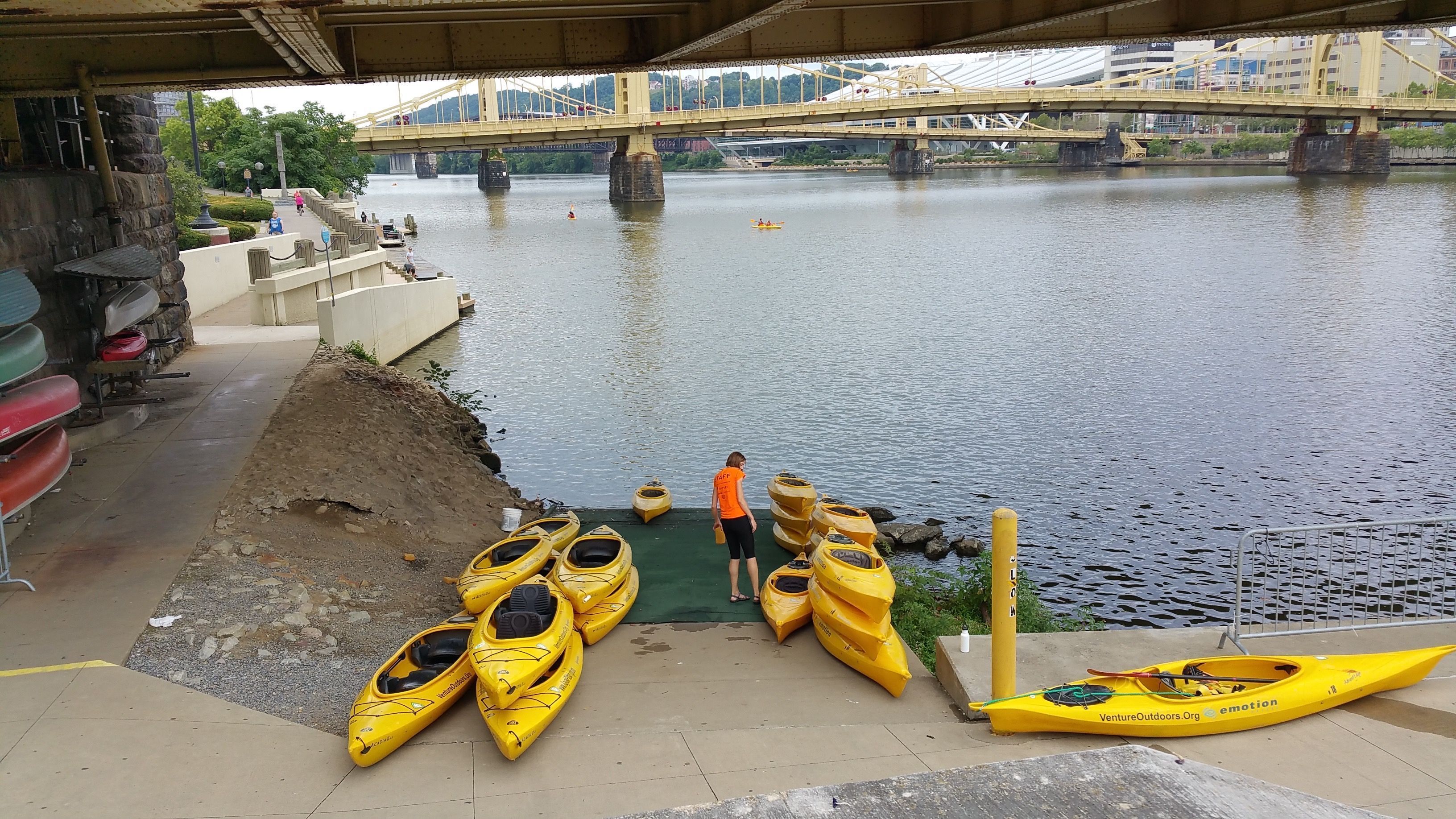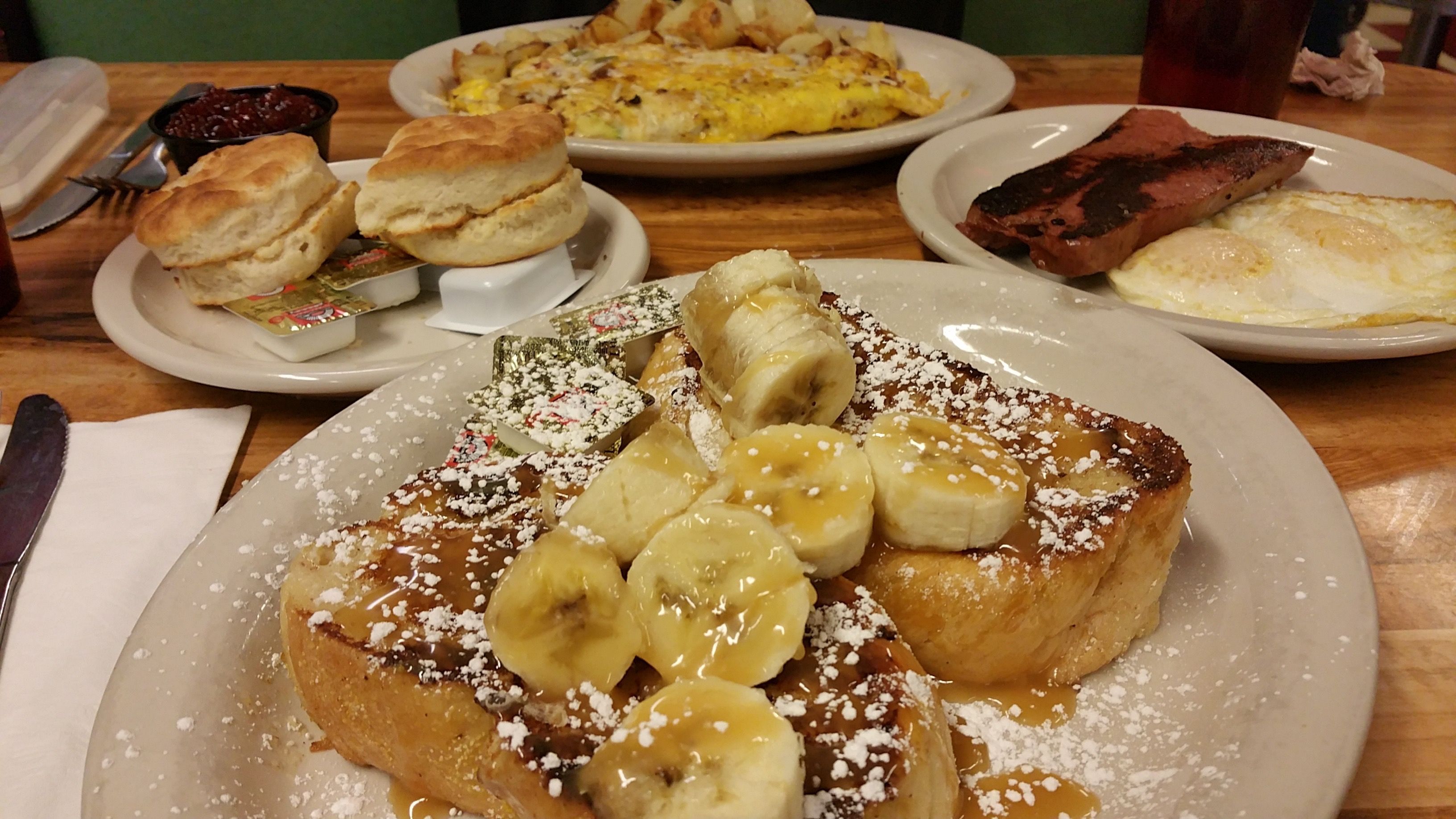By cleaning up its act and investing in the quality of life of their city, the Pittsburgh you may remember has evolved into a “Kidsburgh” that attracts families to live and visit. This is the brief story of how the home of the steel industry that built the world’s tallest skyscrapers has been forged into one of the country’s sustainable success stories.
Sustainability Pays Off for Pittsburgh
Pittsburgh’s environmental decline began in the mid-1700s when coal was first discovered. Over the next century, smoke pollution and sewage dumped into the city’s three famous rivers contributed to the highest typhoid fever mortality rate in the United States. Yet, citizens and industry ignored the smoke regulation laws because the city’s dark sky -– street lamps came on at 10am as you can see in the vintage photos up at the Duquesne Incline Museum -– was thought to be a sign of prosperity. In 1866, a writer from Atlantic Monthly said Pittsburgh looked like, “hell with the lid taken off.”
Not until David Lawrence became mayor in 1946 did things begin to change. His Renaissance of Pittsburgh movement began at The Point, the triangle of land where the Monongahela and Allegheny Rivers meet. Old buildings were raised, a park was opened and new development began in this Gateway Center.
By the 1950’s, money was coming in from the city’s industrial giants: Mellon, Heinz, Carnegie and others to revitalize the downtown. Mellon Square, site of the first public “green space” on top of an underground garage in the nation, was considered revolutionary in 1955.
Progress continued with industry leading environmental improvements. Three of the most famous skyscrapers were built of material produced in Pittsburgh: the U.S. Steel Building was made of Cor-ten steel with its corrosion-resistant finish. The Alcoa Building was made entirely of aluminum, and the PPG Building, a favorite for its Gothic castle appearance, was built of black Pittsburgh plate glass.
The 60’s environmental movement focused attention on the city’s quality of life problems. At the confluence of three heavily polluted rivers including the Ohio, the city of steel was once the largest inland port in America. Today, the water is clean enough to hold the country’s largest bass fishing tournament, with a $1 million prize.
In 1967, local son and Ketchup heir H.J. “Jack” Heinz II endowed the city’s fine arts through the Pittsburgh Cultural Trust. When the steel industry began to crumble in the 1980s, it became ever more critical to focus on other businesses. In Pittsburgh’s case, it was the investment in medical research, high tech and services which sustain the population today. Many of these improvements to the local lifestyle have helped Pittsburgh grow into an excellent family travel destination.
The Rich Support the Arts & Culture
Heinz’ money went into remaking the abandoned downtown into a 14-block Cultural District to serve residents and draw visitors. Two restored movie palaces from the days of vaudeville have become Heinz Hall, the current home of the Pittsburgh Symphony Orchestra, and the Benedum Center for the Performing Arts, where you can catch many traveling Broadway shows. The neighborhood is also filled with popular restaurants and bars.
The District includes arts companies such as the Pittsburgh Ballet Theatre, Pittsburgh CLO, Pittsburgh Opera, Pittsburgh Public Theater, Pittsburgh Symphony and August Wilson Center for African American Culture, among hundreds of other arts groups, galleries, public artworks, and artist workshops. More than 1,500 programs draw two million visitors year round; they include an annual International Children’s Theater & Festival and many other family-oriented events. The Cultural District also encompasses the city’s High School for Creative and Performing Arts and, fittingly named, the David Lawrence Convention Center.
The development that began the slow process of turning downtown around, now gives people a reason to stay after work. The growing businesses that cater to them have led to an influx of young professionals who are fueling a construction boom as they choose to make downtown home.
Pittsburgh Art Scene + Andy Warhol
The North Side, just a few blocks from the Andy Warhol Bridge, is home to The Andy Warhol Museum. Teens can spend a half day there, but even preschoolers will enjoy an hour with the famous-for-15-minutes pop artist. The museum’s half-hour, G-rated film about how the shy, sickly Andrew Warhola grew into a graphic artist and worldwide sensation is fascinating, and makes the collection much more meaningful. Upstairs, a hall devoted to his work for children has low hung images of the Lone Ranger and sports figures that kids may recognize. If not, encourage them to try on the variety of hats and old costumes and play the part. A slew of children were also enjoying the “Silver Clouds” exhibit during my visit, a room full of eerily suspended and floating chrome balloons that the children were free to touch and shove in different directions.
The nearby Mattress Factory, in the historic Mexican War Streets district, is another example of Pittsburgh’s avant-garde artistic soul, a space devoted to room-size installations by individual artists.
To the east is the famous Carnegie Museum of Art with exhibits of Impressionist, Post-Impressionist and 19th Century American art. If your kids will enjoy the art classes there, plan to spend at least half a day to explore it thoroughly.
Pittsburgh’s major philanthropists, Carnegie and Heinz, funded the arts that contributed to its bloom into a successful, modern waterfront city. But it was the steel industry that turned downtown into one of the most photogenic American urban spaces.
Pittsburgh’s Best Views
Families can get up close and under the skyline with a riverfront view, courtesy of Just Ducky Tours,as you can see in our video. This guided tour by amphibious vehicle splashes around between Station Square and The Point, where the city’s rivers meet. Now that the water’s clean, join with kayakers and standup paddleboarders enjoying the views or take one of the BikeShare bikes along the 24 miles of riverfront.
Get above the Monongahela River views on a ride that used to spare the horse drawn carriages (and more recently, hikers) from climbing the very steep Southside palisades to the residential areas on Mt. Washington. The Duquesne Incline and the Monongahela Incline are two existing wooden cable cars pulled uphill on tracks. Both provide the most splendid views, but if you only have time for one, head to the ca. 1877 Duquesne Incline for its small on-site museum, where the whole family can watch the inner workings of the pulley system that hauls the cars.
The classic PNC Park is the fifth home of the Pittsburgh Pirates since their first game in 1887. Opened in 2001, it has brought a major economic boost to Northside because so many fans come to games and stay overnight. Ornate metal trusses recall baseball’s golden era while the park’s unusual tiered architecture brings every spectator close to center field. Maybe that’s why the screams of “Go Bucks!” are so loud.
This ballpark is also so environmentally friendly that they compost food waste and peanut shells. Families will love the many food choices, the scenic waterfront pathways where restless kids can play T-ball or stretch in any inning, and how easy it is to walk to over the Roberto Clemente Bridge. Bring your camera to capture classic views of downtown.
Pittsburgh takes Education & Kids Seriously
Arts initiatives, local foundations and civic pride have remade the city’s 19th century treasures into a very kid-friendly destination known as Kidsburgh. Families find a lot going on, and event shedules and programming news are tagged as #LovePGH on social media so that visitors can keep up to date.
Our top pick among all attractions, the beautiful old Carnegie Museum of Natural History features the third-largest repository of dinosaur fossils in the world. Kids can poke around on their own in the Bonehunters Quarry and watch through lab windows as on-site researchers study the latest fossils and specimens.
The turn-of-the-19th century Pittsburgh Zoo and new PPG Aquarium are award-winning educational institutions that keep modernizing and expanding. In addition to 4,000 animals (including a snow leopard and a Visayan warty pig in the new Islands exhibit) and the Kids Kingdom children’s zoo, there is a Discovery Pavilion and a new hands-on petting area.
We loved the way the Pittsburgh Children’s Museum expanded into a neighboring post office and planetarium to provide a vast, fun space with waterplay areas, a costume shop, a replica of the trolley used in “Mr. Rogers Neighborhood” and a Maker Studio where young inventors can try out ideas. If you’re traveling with preschoolers, allow several hours here as you’ll likely get lost in one of their interactive play areas.
Fun learning opportunities seem to continue without end. The Carnegie Science Center contains interactive planetariums and a four-story OMNIMAX Theater. There’s robotics, a submarine, interactive physics displays and a show about the environmental importance of Pittsburgh’s rivers that recalls the steel-making era before the city’s sustainable development movement.
Fun For The Whole Family
Fascinating may be a better word than “fun” for the last remaining steel mill tour in Pittsburgh, but it will entertain kids who are curious to climb into the old rusting mill works. If you’re interested in what made this town (and the country’s entire Rust Belt) wake up each morning, plan a half-day Carrie Furnace Tour. Staffed by volunteers from the Rivers of Steel Heritage Foundation, like the former steel yard railroad engineer who led our group, it’s an in-depth look at the steel-making process and the industry’s rise and fall in Pittsburgh. Book ahead.
Traveling in summer and looking for plain, old-fashioned fun? The National Historic Landmark Kennywood Park is a coaster enthusiast’s dream and home to the famous Potato Patch Fries (delicious, thick cut French fries) which accompany any dish worthy of being a Pittsburgher favorite.
We know because we tried them at the Sandcastle Waterpark , the very wet sister to Kennywood. Similarly, the Idlewild & SoakZone themepark and waterpark (also owned by Kennywood) are also neighbor parks, open summers only. Dating back to 1878, Idlewild is the third oldest theme park in the country and remains a favorite for its Mister Rogers’ Neighborhood of Make Believe with its own trolley ride.
But the potential for outdoor fun for families visiting Pittsburgh reaches far beyond the domain of its acclaimed amusement parks.
For a day of shopping and an excellent sampling of city culture, the family will enjoy a walk through the Strip District. Lining a street inland from the Southside waterfront, The Strip has its own collection of offbeat restaurants, hundreds of small shops, a large produce market that explodes on weekends, and two rival breakfast places: Pamela’s where President Obama is said to favor the hotcakes, and Deluca’s Diner, whose enormous fold-over omelettes boast a huge range of fillings.
Pittsburgh Travel Tips
For seasonal travel specials, plus more information on great activities for all ages, check out Visit Pittsburgh.
One final note, adds writer Susan Finch, be on the lookout for the locally renowned dialect of Pittsburgh’s long-time residents, known as Yinzers. “You can recognize the dialect if the speaker uses the expression ‘Yinz’ just as a Southerner uses “Y’all” (i.e. “Are Yinz goin’ downtown?”).
Dear Reader: This page may contain affiliate links which may earn a commission if you click through and make a purchase. Our independent journalism is not influenced by any advertiser or commercial initiative unless it is clearly marked as sponsored content. As travel products change, please be sure to reconfirm all details and stay up to date with current events to ensure a safe and successful trip.




